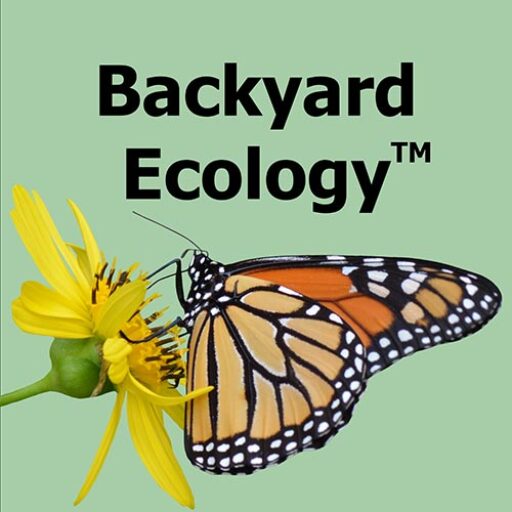Tag: Gardening for wildlife
-
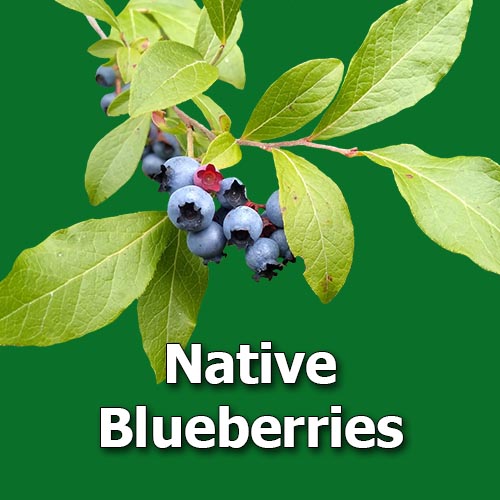
9 Native Blueberries You Can Grow in the Home Landscape
Learn about 9 native blueberries that are native to at least some part of the eastern U.S. and can be purchased from native plant nurseries.
-
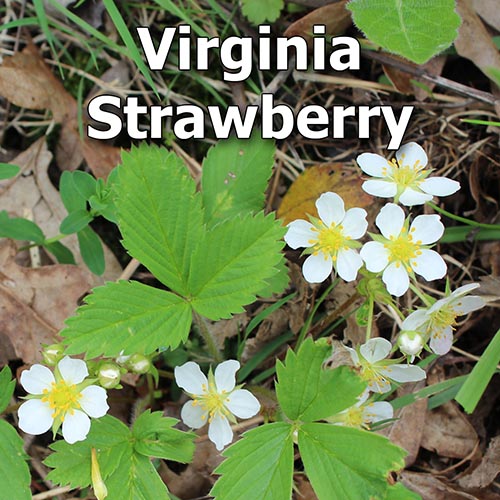
Virginia Strawberry: A Beautiful, Tasty, Underutilized Native Groundcover
Virginia strawberry (Fragaria virginiana) is a beautiful, native groundcover that produces yummy berries and supports a wide range of pollinators and wildlife.
-
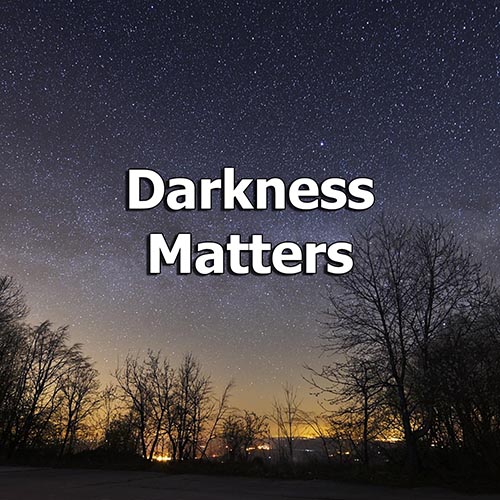
Darkness Matters: Light Pollution’s Threats and Simple Ways to Help
Darkness is an extremely important component of our ecosystem. Unfortunately, we’re losing it to light pollution. Learn simple things you can do to help.
-
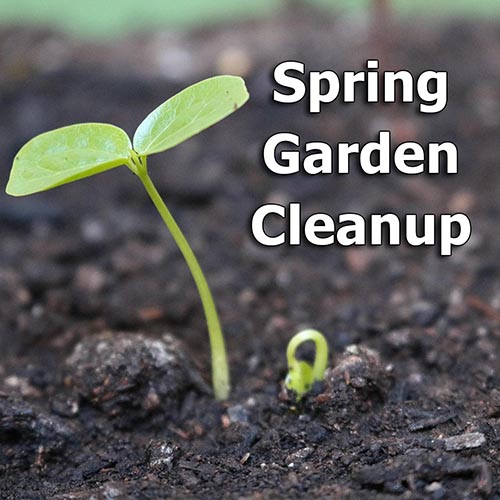
How to Do Spring Garden Cleanup for Pollinators and Wildlife
Discover what to do for an ecological-based spring garden cleanup. Which of the tasks that you delayed doing in the fall still need to be done? And when?
-
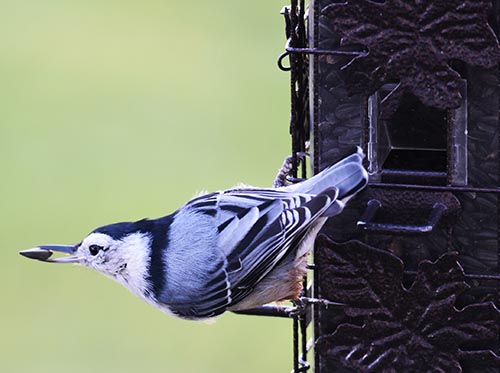
How to Attract More Birds to Your Yard
When someone decides they want to attract birds to their yard, often the first thing they do is put up a birdfeeder (or two). It’s what we did when I was a kid, and it’s what countless other people I know have done. There’s nothing wrong with putting out a birdfeeder. They’re a great way…
-
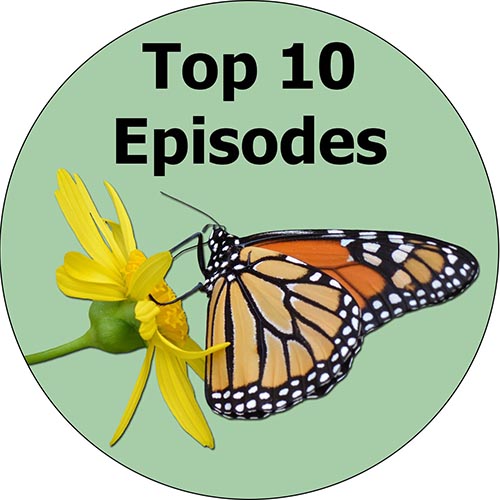
Top 10 Backyard Ecology Podcast Episodes: October 1, 2022 – October 1, 2023
We review the top 10 Backyard Ecology podcast episodes published between Oct. 1, 2022 and Oct. 1, 2023 based on the number of downloads.
-
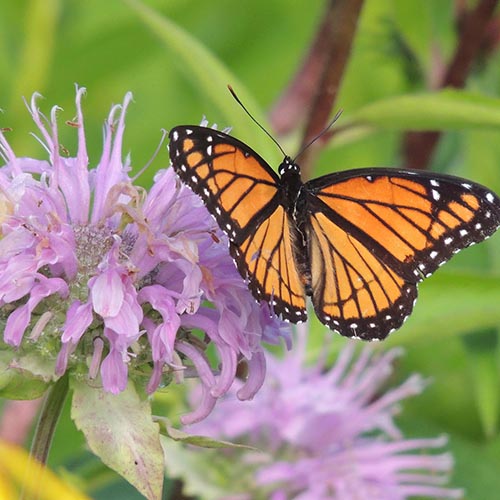
Tips and Tricks for Growing Prairie Plants in Your Native Plant Garden
in PodcastShannon Trimboli, Neil Diboll, and Hilary Cox discuss growing native plants in garden settings and the new book, The Gardener’s Guide to Prairie Plants.
-
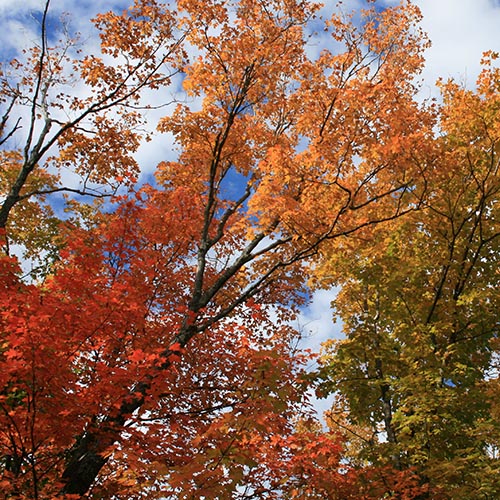
Fall Cleanup in the Pollinator and Wildlife Garden: A Comprehensive Guide to What You Need to Know and Do
When gardening with native plants for pollinators and wildlife, the traditional fall cleanup of the garden is not only unnecessary but could be detrimental.
-
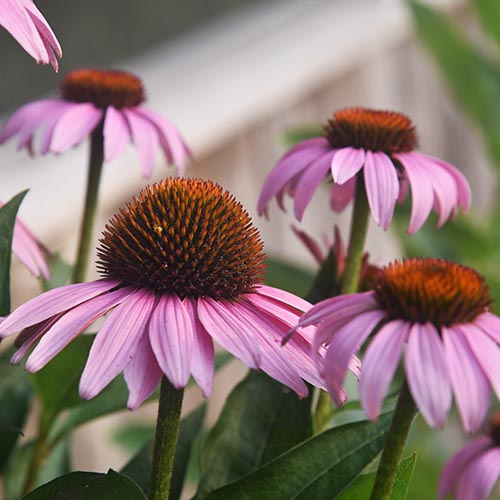
Resharing Your Favorites: Gardening with Native Plants
In this Backyard Ecology episode we talk with Jennifer Ceska from the Georgia State Botanical Garden at UGA about gardening with native plants and much more.
-
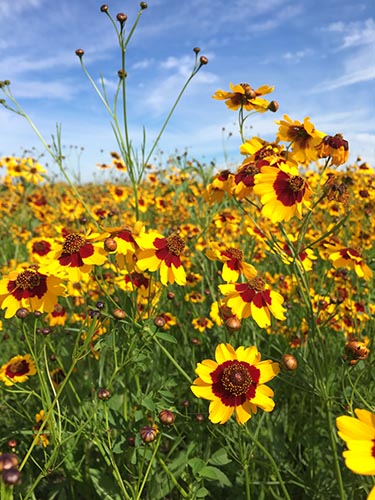
The Secret to Building a Thriving Backyard Ecosystem: Embracing “It Depends”
The secret to building a thriving ecosystem in your yard or community is to understand and embrace the concept of “it depends.”
-
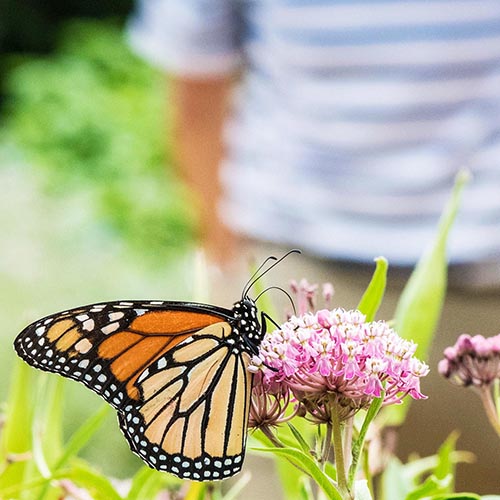
Building Thriving Ecosystems and Exploring Nature in Your Backyard with Backyard Ecology
in PodcastBackyard Ecology now has a new membership community and group coaching programs to help people at a deeper level through all stages of their ecological journey.
-

The American Goldfinch: A Comprehensive Guide
I remember Dad hanging our first tube feeder on the front porch. He filled it from a special bag of seed, not the sunflower seeds that we fed to all the other birds that came to our feeders during the winter. These were much smaller and elongated – “thistle seeds” he called them. I silently…
-
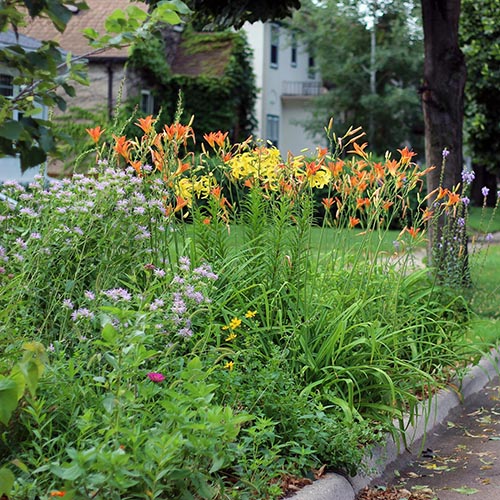
Exploring Urban Ecology: Understanding and Appreciating Nature Where We Live
in PodcastNavigation Menu Audio Links Sara’s links: Other episode-related links: * Amazon links are affiliate links. Backyard Ecology links: Back to top Full Transcript Intro: Did you know that urban ecology doesn’t just apply to big cities and towns? Even if you live in a fairly rural area, if there is a lot of interaction between…
-
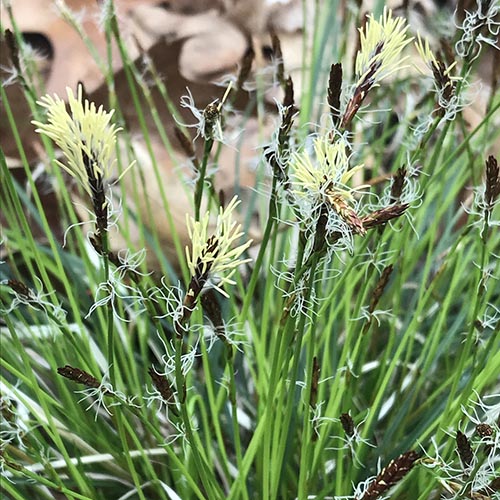
Gardening with Sedges – Mt. Cuba Center Carex Trial
in PodcastDid you know there is a group of native plants which can be highly adaptable, can serve multiple functions in our gardens, and perhaps even be a backbone component to our home landscapes, but which has historically been overlooked for those purposes? This group of native plants is the sedges, or more specifically, members of…
-
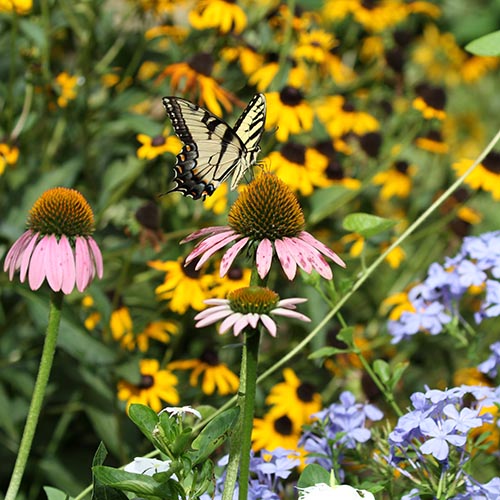
Why Are Some Native Plants Unavailable Early in the Season?
As spring starts to roll around, the garden centers, greenhouses, and nurseries fill up with seeds, bulbs, and pots of brightly colored plants in full bloom. It’s a scenario that plays out every year in just about every town or city. At the same time, the weather is warming up and everyone is getting the…
-
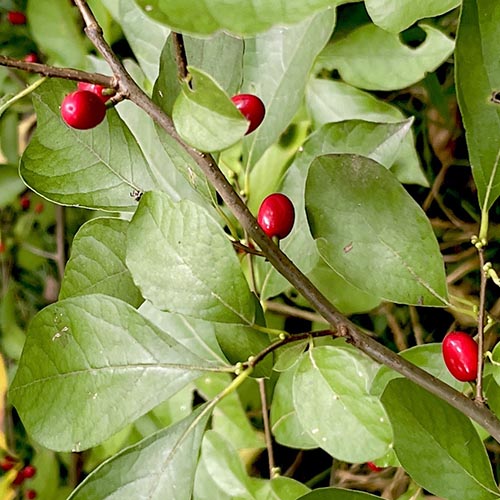
Spicebush – A Native Shrub with Plenty to Like
By: Anthony Trimboli When we think of native shrubs that have four season interest the hollies often come to mind. Their bright red berries, spring bloom and foliage are all hard to beat when it comes to looking good in the landscape. But there is another alternative to the hollies that has many of the…
-
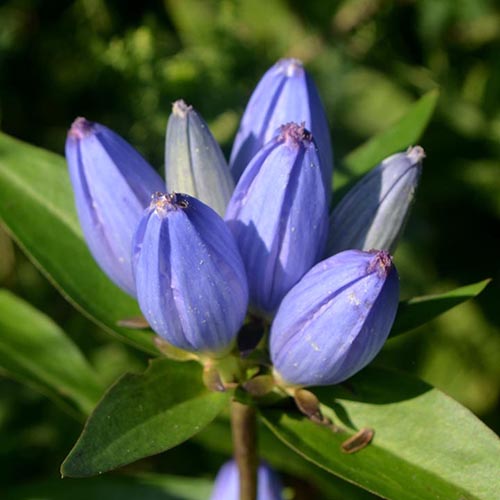
Growing Native Plants, Insect-Plant Interactions, Playing in the Pond, and Much More with Dr. Randi Eckel
in PodcastYou know how sometimes you’ll meet someone and things just “click?” You quickly discover that you have lots of shared interests and experiences and your conversation just flows as it goes down one path and then the next. Well, that’s exactly what happened in this episode as I talked with Dr. Randi Eckel. Randi is…
-
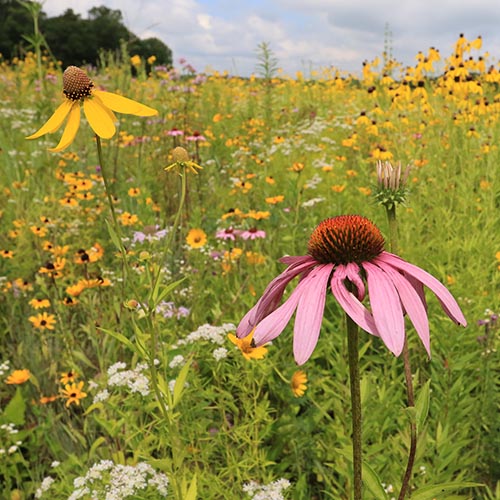
Should you mow your meadow or pollinator planting?
in PodcastHave you planted a meadow or pollinator planting on your property? Or, do you know someone or some place in your community that has one? If it’s on your property then part of the recommended management for it may have been to mow it periodically. Or if it’s not on your property then you may…
-
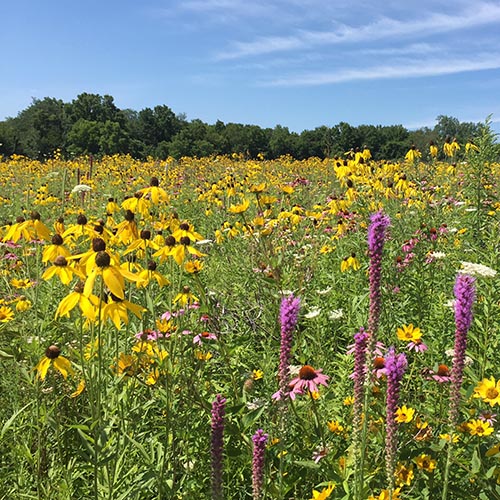
Wildflower vs Native Plant: What’s the Difference?
Browse seed catalogs or walk into almost any big box store’s garden center and there is a good chance that you’ll find one or more seed mixes for sale that are labeled as “wildflower blends.” Some are even marketed as good for pollinator gardens. But just because something is a wildflower doesn’t mean it is…
-
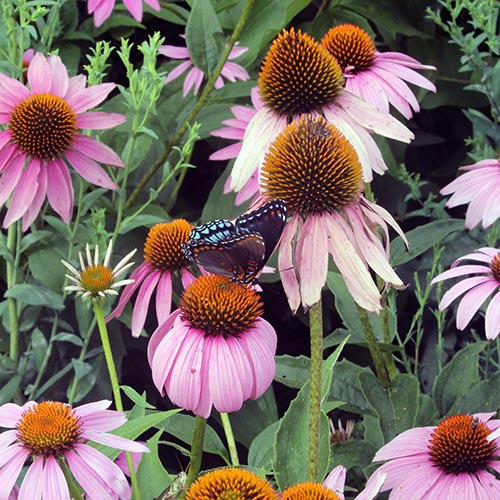
Ecology Based Landscaping with Larry Weaner
in PodcastDo you want your yard to benefit nature, while also being a place that speaks to you and is somewhere you enjoy spending time? Would you love for your yard to also be a place your neighbors admire and that inspires them to create pollinator and wildlife friendly landscapes? In this episode of the Backyard…
-
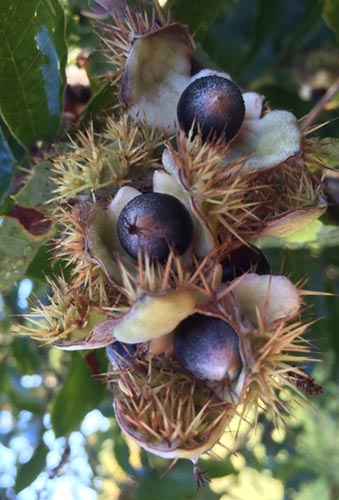
Allegheny Chinquapin: An underutilized but excellent nut producing shrub
By: Anthony Trimboli When it comes to native nut producing trees and shrubs the oaks get most of the attention. The mostly gone but not forgotten American chestnut also gets a ton of press, even though there is no blight resistant variety available – yet. While trees are excellent nut producers, they are not the…
-
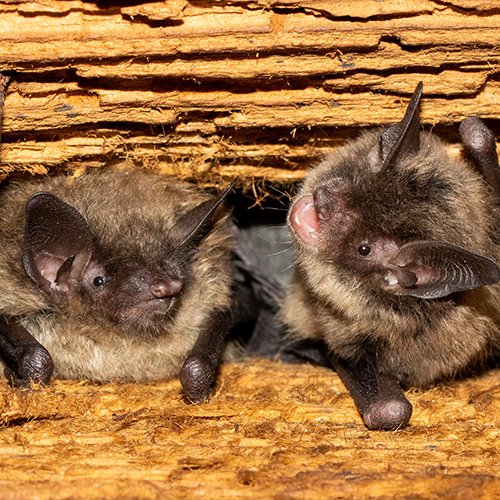
5 Things to Consider Before Buying or Putting Up a Bat Box
Bats are an important part of the ecosystem. In the eastern U.S., all of our bats are insectivorous which means that they eat insects. Many of the insects they eat are ones that we would consider pests. Unfortunately, populations of many of our bat species are declining for a variety of reasons. One of the…
-
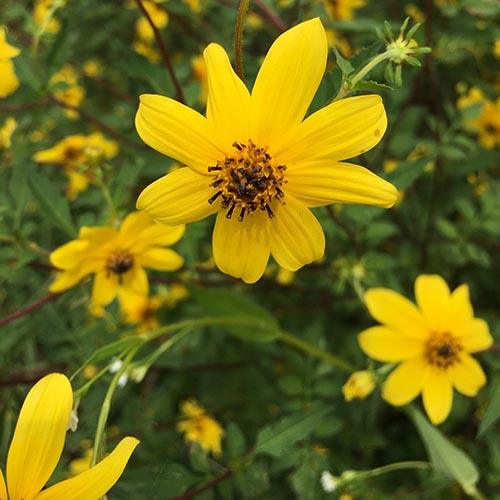
5 Native Plants that Bloom in the Late Fall
in PodcastOne of the most common pieces of advice given related to pollinator gardening is to try and have a constant supply of blooms available throughout the growing season. That’s easy in the spring. The summer is a little more challenging than the spring, but is still relatively easy. Even early fall isn’t too bad thanks…
-
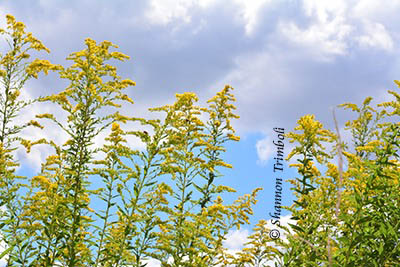
Pollinator Friendly Methods for Mowing Fields
Property owners and land managers will often mow large fields in the fall. Sometimes this is done for aesthetic reasons. Sometimes it is done because “that’s the way it’s always been done.” And sometimes it is done out of a desire to keep trees and other woody vegetation from taking hold in the field, especially…
-
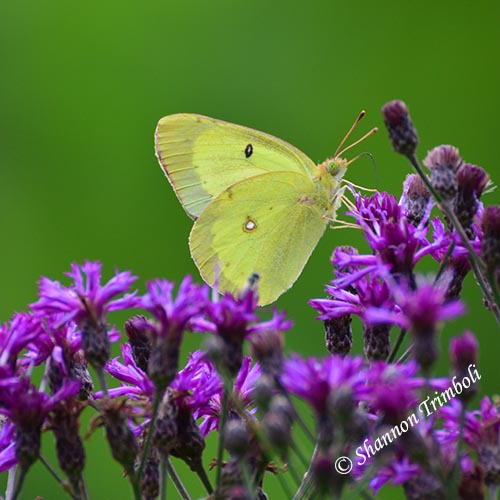
Tall Ironweed: A Beautiful Source of Fall Nectar and Pollen
Ironweeds are perennial, native wildflowers that produce beautiful, purple blooms about the time the goldenrods start to light up the fields. There are approximately 15 different species of ironweeds (Vernonia spp.) in the eastern U.S. with more out west. The most widespread species in the eastern U.S. is tall ironweed or giant ironweed (Vernonia gigantea…
-
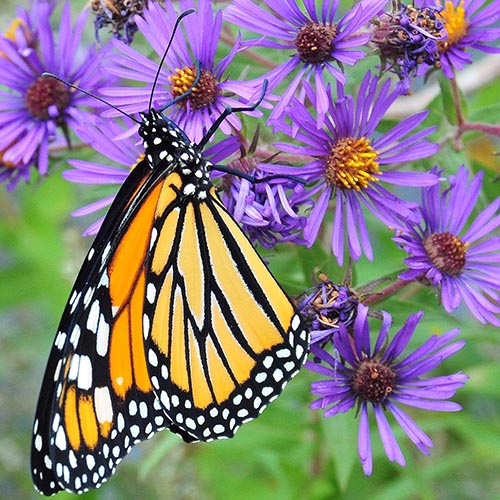
5 Fall Blooming Native Plants I Love
in PodcastFall is an extremely important time for pollinators, so having plenty of flowers available at this time of year is crucial if one of your goals is to attract pollinators. Luckily, there are lots of fall blooming, native plants that you can grow in your gardens. In the last Backyard Ecology podcast episode I talked…
-
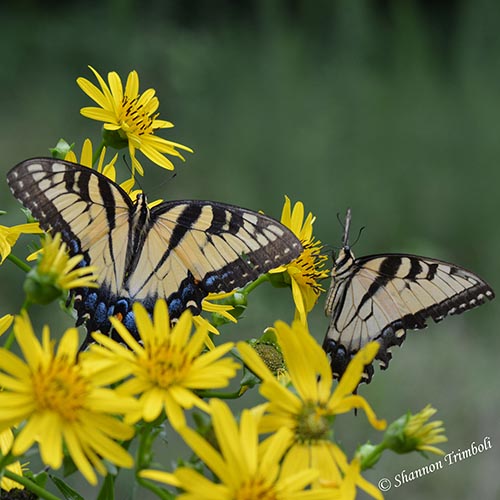
5 Late Summer Blooming Native Plants I Love
in PodcastLate summer is often thought of as a challenging time for gardening. It’s hot, it’s humid, we may or may not be getting regular rainfall, and there are often lots of other summertime activities competing for our attention. But if our goal is to plant for pollinators and wildlife, then it is important to make…
-
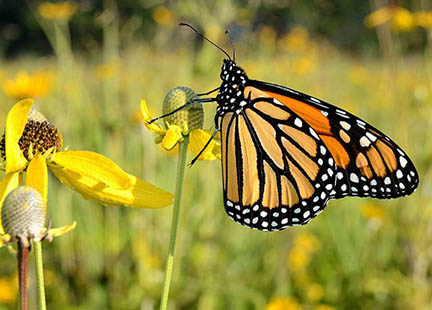
Everything You Need to Know about the IUCN Listing of the Monarch Butterfly
in Take ActionOn July 21, 2022, the IUCN listed the migratory population of the monarch butterfly as endangered on their Red List of Threatened Species. Monarch butterflies are so familiar and so beloved that the reaction was immediate and passionate. In many cases, it was also misinformed. So, let’s dig in a little deeper and talk about…
-
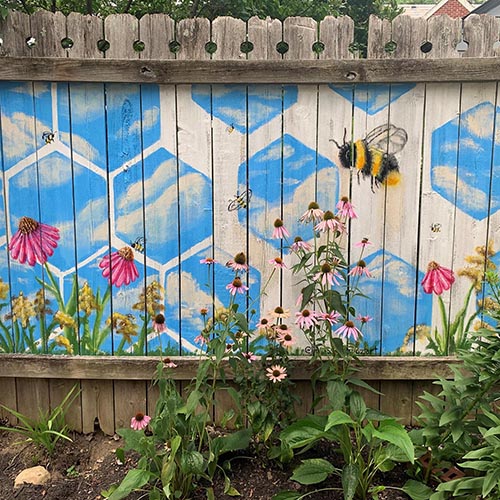
Getting the Community Involved in Creating Pollinator Habitat
in PodcastI often hear comments or questions such as, “I do what I can in my yard, but I wish more people in my community would plant pollinator gardens.” Or, “What can I do to get my community involved and to make my community more pollinator friendly?” It can feel overwhelming and like there isn’t anything…
-
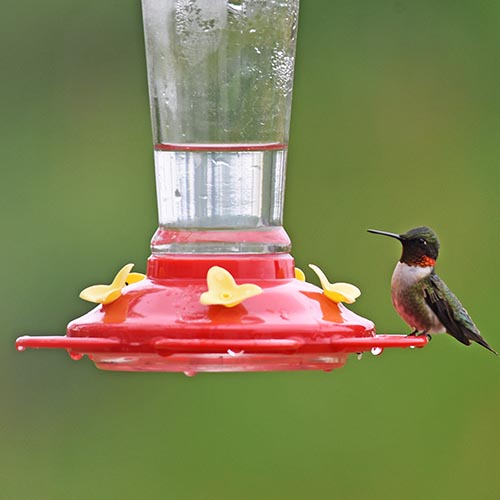
10 Tips for Feeding Hummingbirds: Hummingbird Feeder Safety and Beyond
Hummingbirds are fascinating and common visitors to our yards. Attracting and feeding hummingbirds is a favorite activity of many people. The internet and social media are full of advice for attracting and feeding hummingbirds, and like for most topics, some of the information is good and some isn’t. In fact, some of the information I’ve…
-
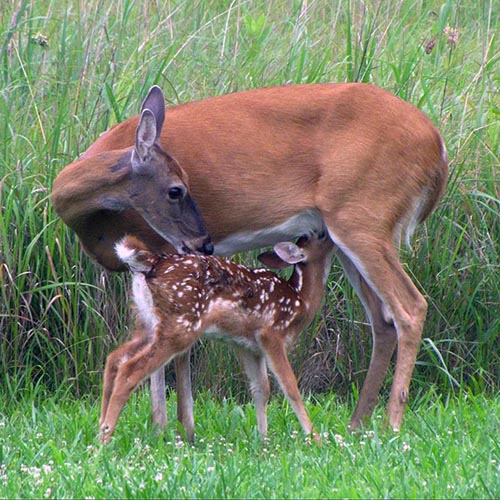
Summertime Activities and an Exciting Backyard Ecology Announcement
in PodcastSummer brings with it butterflies, lightning bugs, caterpillars, hummingbirds, fawns, baby birds, and so much more. It can be a really fun time to just get outside and observe all of the fascinating plants and animals around us. There are also plenty of things that we can be doing at this time of year to…
-
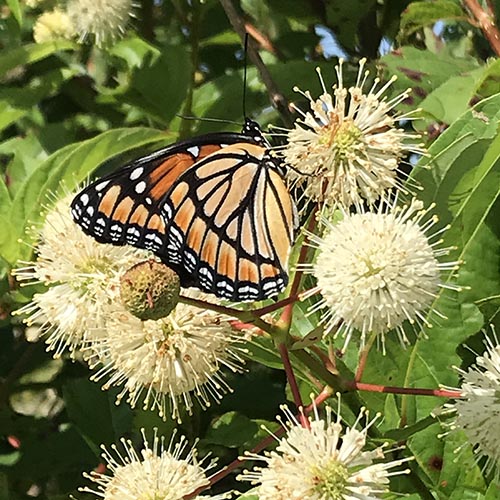
Buttonbush: A summer extravaganza for pollinators
Introduction Buttonbush (Cephalanthus occidentalis) is a deciduous shrub native to the eastern half of North America. It can be found growing naturally along creeks, ponds, lakes, and other fairly wet areas. Buttonbush can also be grown as a native ornamental in mostly sunny areas where the soil is on the moist side of medium to…
-
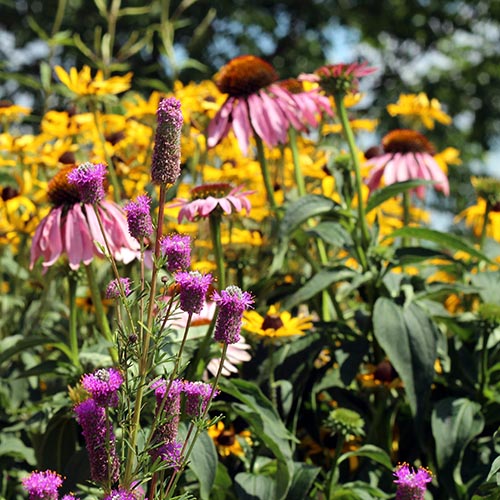
Understanding a Common Saying When Growing Native Plants
Growing native plants is one of the best things you can do to attract pollinators and wildlife. However, if you’ve ever grown native plants either in your garden or in a larger pollinator planting, then you may have noticed that some species are very slow to take off. In fact, the phrase, “The first year…
-

Gardening with Native Plants
in PodcastThe interest in gardening with native plants has been growing steadily, and I am very excited about that fact. Growing native plants in our gardens and landscapes can have many benefits – both for us as the gardeners and for the pollinators and wildlife that also call our yards home. Plus, we have some absolutely…
-
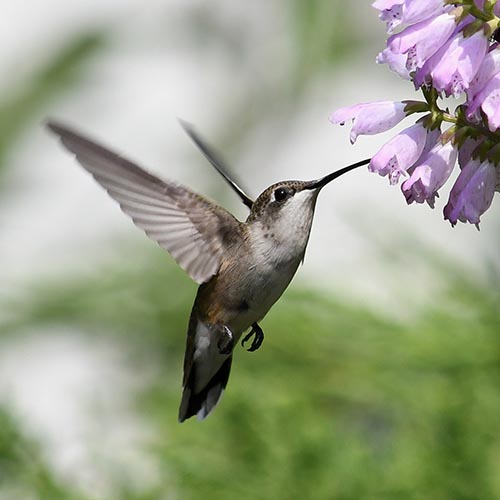
Attracting Ruby-Throated Hummingbirds to Your Yard
in PodcastRuby-throated hummingbirds are common and much beloved summer visitors to yards and gardens throughout the eastern U.S. and Canada. In this episode of the Backyard Ecology podcast, we talk about ruby-throated hummingbirds, their northward migration, and how to make our yards more hummingbird friendly. We are joined in this conversation by Cyndi Routledge who is…
-
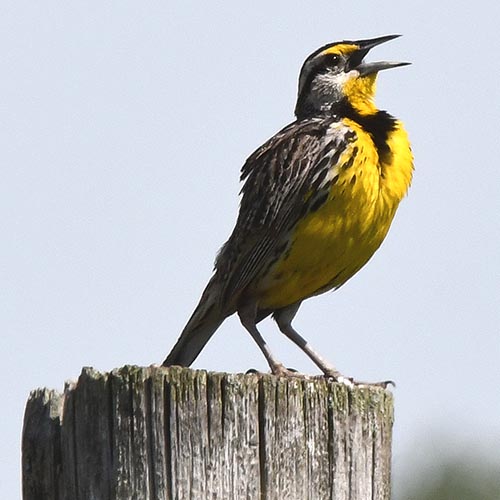
Grasslands and Grassland Birds of the Eastern U.S.
in PodcastGrassland birds such as bobwhite quail, meadowlarks, sparrows, northern harriers, burrowing owls, and many others represent one of our fastest declining groups of birds. In many ways, this makes sense since grasslands are some of our fastest declining ecosystems, especially in the eastern U.S. Yet, many people don’t realize how rapidly grassland birds and the…
-
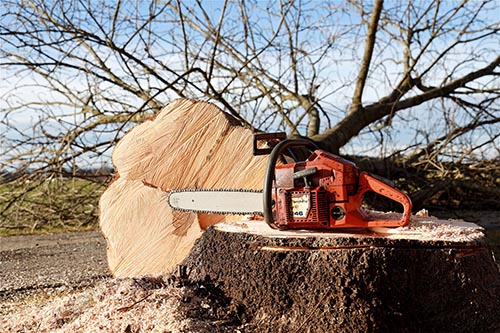
If You Need to Cut Down a Tree, Do It in the Winter
Trees can be valuable components of our ecosystems, not to mention the cooling and other benefits they can provide around our homes. But sometimes you may need to cut down one or more trees. From a wildlife perspective, the best time to cut down a tree will be in the winter. All else being equal,…
-
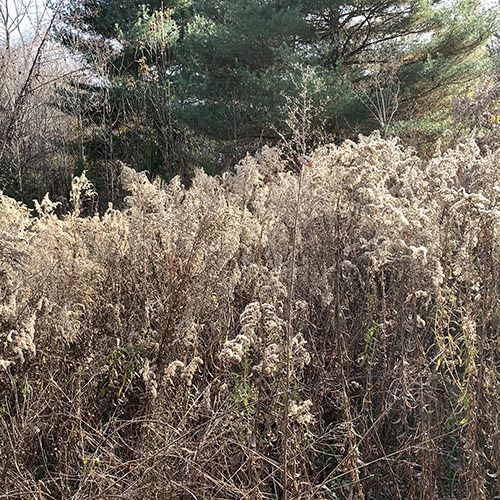
Habitat Management and Observing Nature in the Winter
in PodcastWinter is often depicted as being dark and cold. A time to slow down and spend more time inside, than outside. But winter can be a really great time for observing nature and doing many habitat management activities. Habitat management activities that we can do in the winter is a topic that I get asked…
-
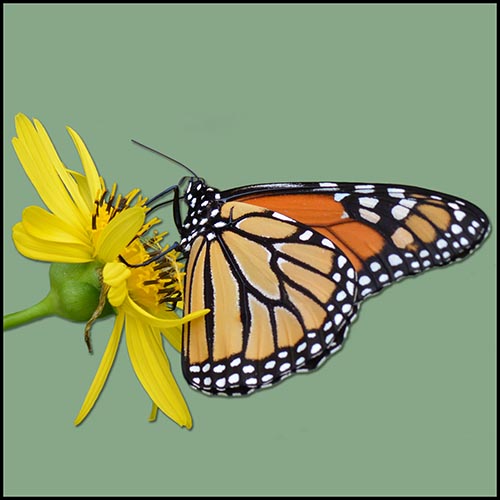
Top 10 Backyard Ecology Blog Articles in 2021
I officially launched the Backyard Ecology blog in September 2020. Over the past 16 months, I’ve written over 50 Backyard Ecology blog articles, in addition to producing Backyard Ecology podcast episodes. The blog articles have covered a wide variety of topics, but generally can be grouped under 4 main categories: Profiles of native critters Profiles…
-
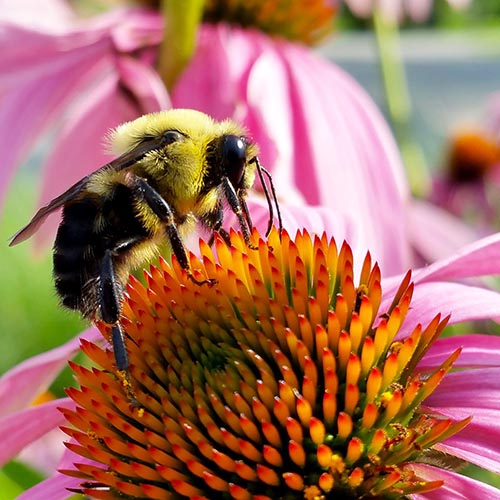
A Conversation with the Co-Hosts of the Native Plants, Healthy Planet Podcast
in PodcastSometimes it’s just fun to sit down and have a fun conversation with other people in the industry, and that’s exactly what we did in this episode of the Backyard Ecology podcast. In this episode, I talk with Fran Chismar and Tom Knezick. Fran is the Sultan of Sales for Pinelands Nursery and the co-host…
-
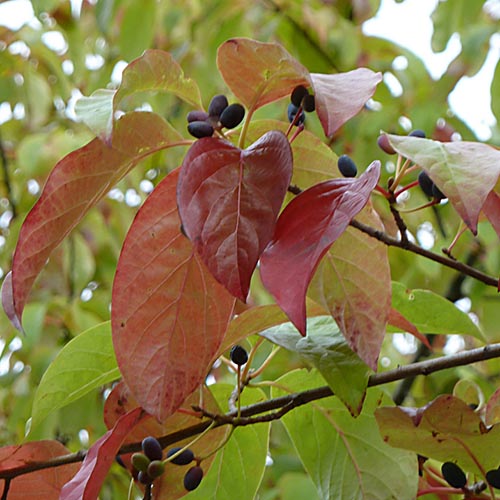
Black gum: A wonderful wildlife tree that also works well in landscaped settings
Have you ever been walking in August or September and noticed a tree with a few scattered red leaves? You may have thought “that’s weird,” because obviously it is still way too early for the leaves to be turning colors. If so, you may have been looking at a black gum. Black gum is a…
-
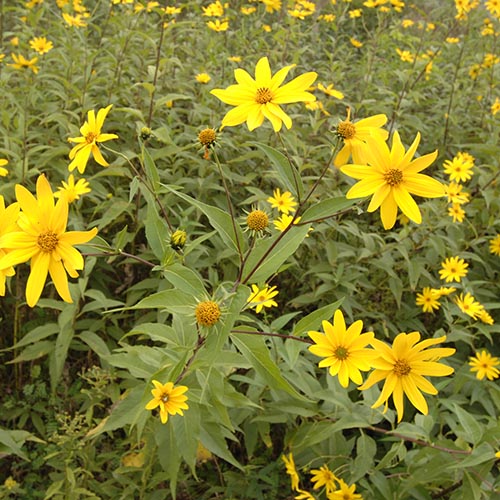
NRCS Programs for Pollinators and Wildlife
in PodcastIf you listen to the Backyard Ecology podcast, then you are likely interested in creating pollinator and/or wildlife habitat on at least part of your property. The Natural Resources Conservation Service or NRCS is a federal agency that has a number of programs which can help us do just that. Previously, NRCS programs and services…
-
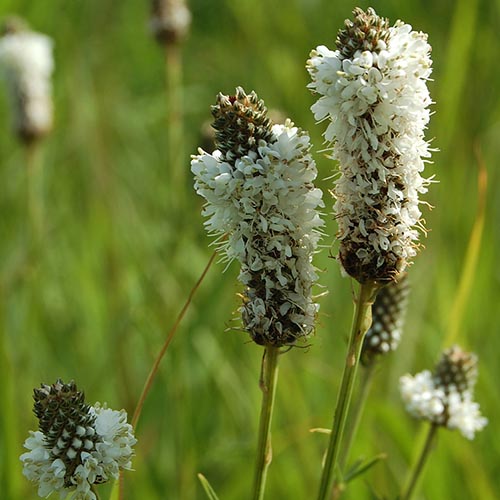
White Prairie Clover: A mid-summer nectar and pollen source for bees
White prairie clover (Dalea candida) is a native, perennial wildflower throughout most of the Midwest and central U.S. The eastern edge of its native range crosses the Mississippi River and includes Illinois, Kentucky, Tennessee, and Georgia. White prairie clover is also commonly grown in garden settings outside of its native range. General Biology and Life…
-
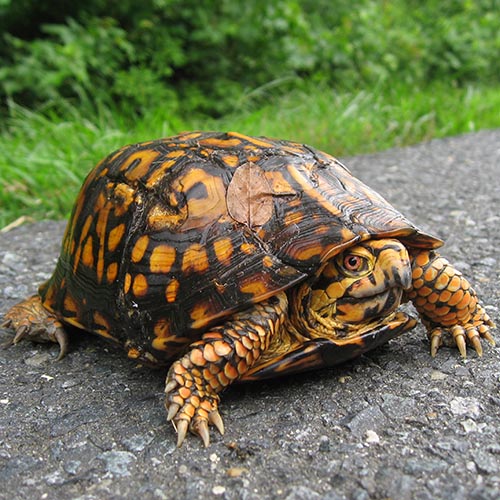
Common Box Turtles: Our Most Common Backyard Turtle Visitor
If you are in the eastern U.S. and find a turtle in your yard, there’s a good chance that it is a common box turtle (Terrapene carolina). Box turtles are also the turtle that you are most likely to stumble across out in the woods, or even on a hike through a meadow. Because common…
-
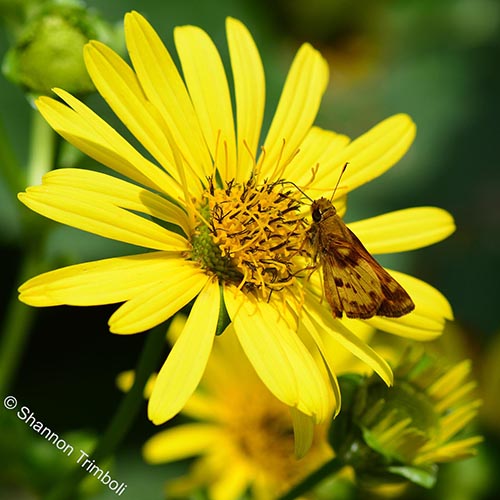
Growing Native Plants: Insights and Stories from 3 Native Plant Nurseries
in PodcastGardening with native plants has been growing in popularity. Some people want to grow native plants for plant conservation purposes or to showcase the diverse, local flora of their region. Others want to grow native plants for the benefits they provide to pollinators and wildlife. Still others are interested in native plants as sources of…
-
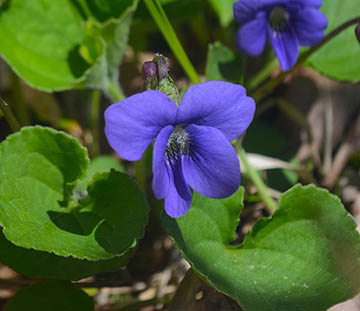
Consider a Living Green Mulch
We all have different aesthetic views. That’s part of what keeps all of our gardens interesting and makes them uniquely our own. Some of us like our beds to be very neatly maintained with expanses of wood mulch separating out each group of plants. Others like to use gravel to segregate their plantings. While still…
-
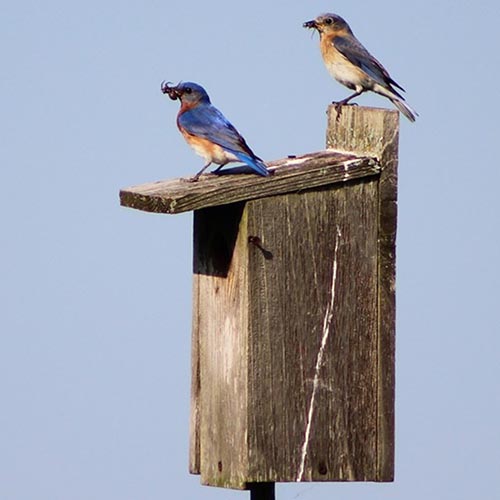
Eastern Bluebirds: Biology and Tips for Attracting
in PodcastEastern bluebirds are a conservation success story. Their numbers plummeted in the early 1900s. Then in the 1960s and 70s, consorted efforts were started to establish bluebird trails and similar programs. Growing up in the late 1970s and 1980s, I remember often hearing about the plight of the eastern bluebird and the need to put…
-
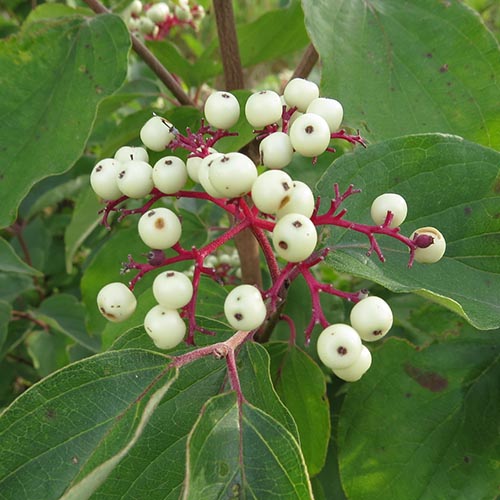
Attract Songbirds by Planting Native Trees and Shrubs that Produce Berries
Planting native trees and shrubs that produce berries is a great way to attract songbirds to your yard. Many of our songbirds rely on berries and other berry-like fruits for at least part of their diet. Some of our migratory songbirds, like gray catbirds, consume a significant amount of fruit, especially during their fall migration.…
-
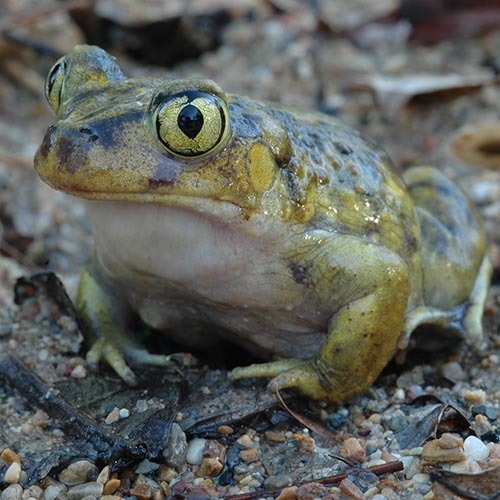
The Fascinating World of Frogs and Toads in the Eastern U.S.
in PodcastFrogs and toads are so much fun to observe and learn about. In the eastern U.S. we are lucky because we have enough water that they can be found virtually anywhere. Some species may be very specific in their habitat needs, but others are fairly general and can be found in urban areas as well…
-
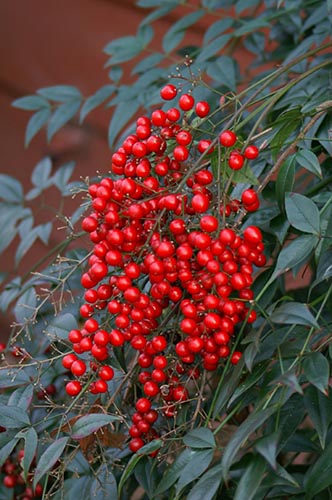
Replace Nandina, the Not So Heavenly Bamboo
By: Anthony Trimboli Nandina (Nandina domestica), also commonly called heavenly bamboo, is an exotic ornamental shrub that is native to India, China, and Japan. Although not an actual bamboo, Nandina does have a cane-like growth pattern and will spread from root suckers. The dark, evergreen foliage and persistent bright red berries, coupled with the near…
-
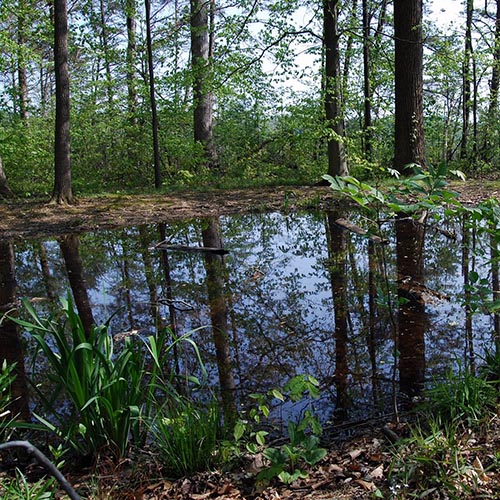
More than a Mud Puddle: The Exciting World of Vernal Pools
in PodcastVernal pools are a special type of shallow wetlands that fill with snow melt and rain in late fall through early spring, then dry up sometime during the summer. Because they dry up, they are sometimes overlooked or dismissed as “not very good wetlands.” However, they serve an important role in the ecosystem and can…
-
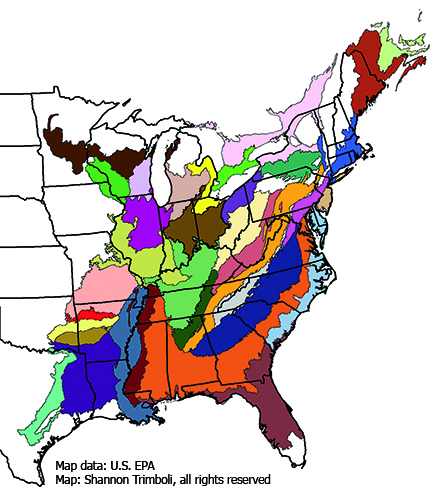
Gardening with Native Plants: Hardiness Zones and Ecoregions
Plant Hardiness Zones Pick up almost any seed packet, read almost any gardening book, or attend almost any gardening class and you are likely to see a USDA plant hardiness map. The map was developed by the USDA and is based on the average minimum winter temperatures for an area. It divides the country into…
-
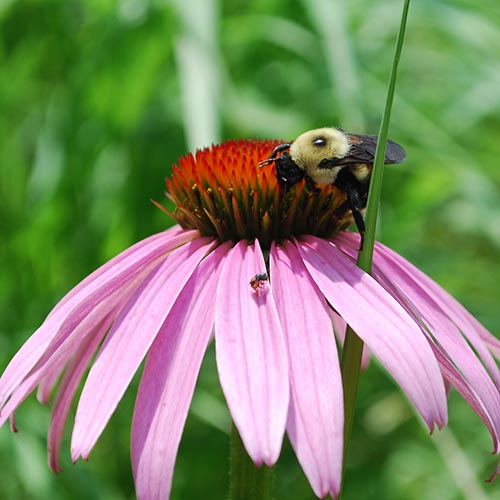
Native Seed Production and Tips for Starting a New Native Plant Garden or Restoration Area
in PodcastGrowing native plants has grown in popularity over the last couple of decades. This has led to an increased demand for native plant seeds. However, many of us have never really stopped to think about how those native seeds are produced on a commercial level. In this episode, we talk with John Seymour and Robert…
-
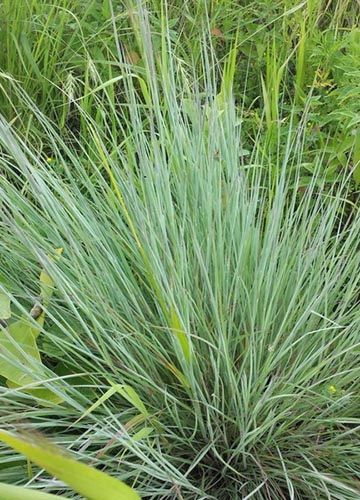
Little Bluestem: A Native Grass for Prairies and Gardens
Little bluestem (Schizachyrium scoparium) is native to the lower parts of Canada and almost the entire lower 48 states in the U.S. It can be found growing naturally in barrens, prairies, savannas, and open woodlands. Little bluestem prefers drier upland sites, but is occasionally found in lower moister areas, especially in some parts of its…
-
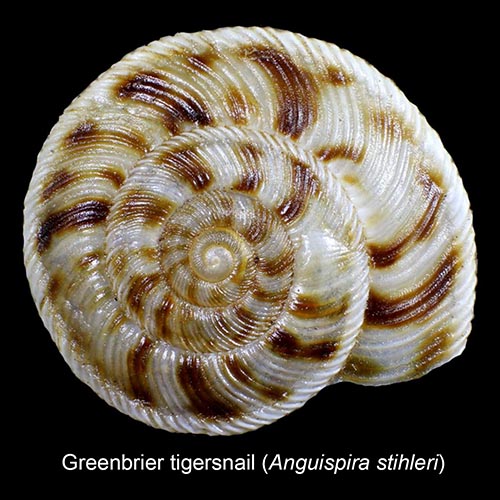
Land Snails and their Amazing Diversity
in PodcastLand snails???? Come on, how do they fit with Backyard Ecology? True, land snails aren’t the most charismatic organism in our yards and communities, so it would be easy to just write them off and ignore them. Most of us probably do that on a regular basis. But, land snails are extremely important to our…
-
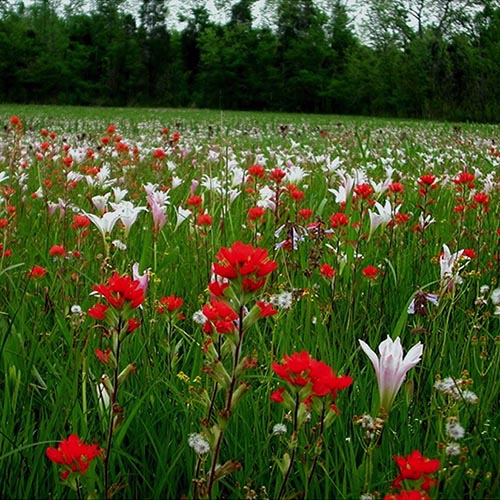
Conserving our Southeastern Grasslands with Dwayne Estes
in PodcastMany of us grew up hearing about the decline of the old growth forests and their impacts on neotropical songbirds and other wildlife. I think this was especially true for those of us who grew up here in the eastern U.S. However, the story that hasn’t been told as well is that of the southeastern…
-
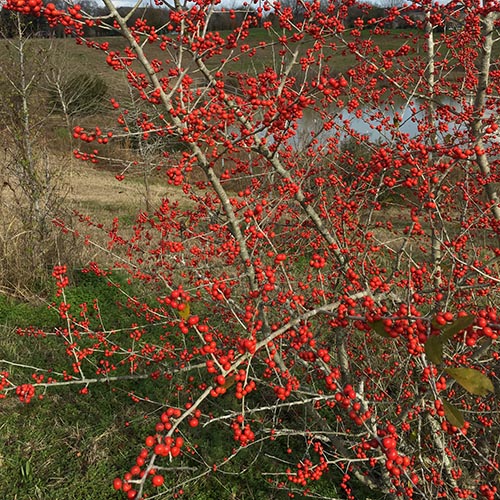
Possumhaw: A deciduous holly
Possumhaw (Ilex decidua) has many common names including deciduous holly, swamp holly, and prairie holly. It is also sometimes called winterberry, but be aware that “winterberry” is more commonly used in reference to Ilex verticillata, which is also a deciduous holly. To make things more complicated, Ilex verticillata is sometimes called “deciduous holly,” even though…
-
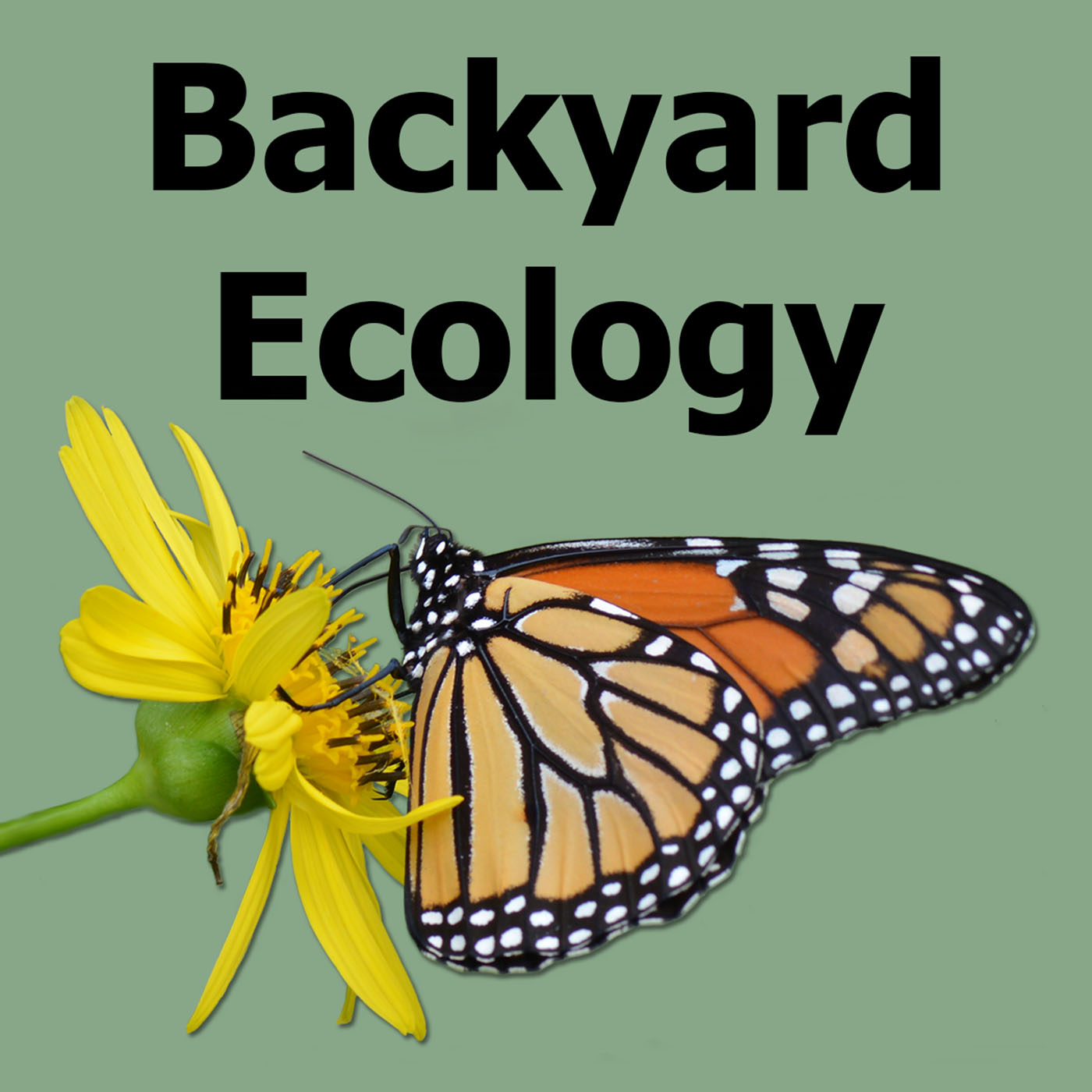
Announcing the Backyard Ecology Podcast
Over the last few months, I’ve been researching and working on a new project. Today I’m super excited to announce that I am launching a Backyard Ecology podcast! For those who might be wondering, a podcast is kind of like an audio version of a blog. I started listening to podcasts about a year and…
-
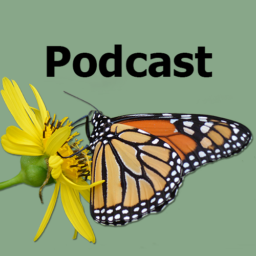
Introducing the Backyard Ecology podcast
in PodcastMany people believe that nature is only “out there” – in national parks, other large chunks of pristine land, or some far-off exotic place. For a long time, I did too. But the truth is that nature is everywhere and there are still plenty of discoveries to be made about the common species inhabiting our…
-
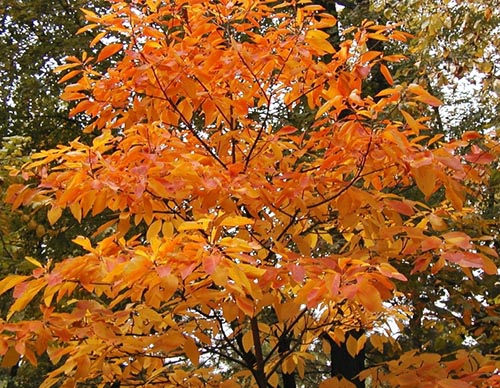
Sassafras – A Beautiful Native Tree Used by Wildlife and Humans
Sassafras (Sassafras albidum) is native to most of the eastern U.S. It is commonly found growing in fencerows, along the edges of woods, along roads or other right-of-ways, in forest openings, and in other sunny to mostly sunny locations. In more mature forests, small sassafras saplings can often be found waiting for a canopy opening…
-

Welcome to the Backyard Ecology Blog
Many people believe that nature is only “out there” – in national parks, other large chunks of pristine land, or some far-off exotic place. For a long time, I did too. But the truth is that nature is everywhere and there are still plenty of discoveries to be made about the common species inhabiting our…
-
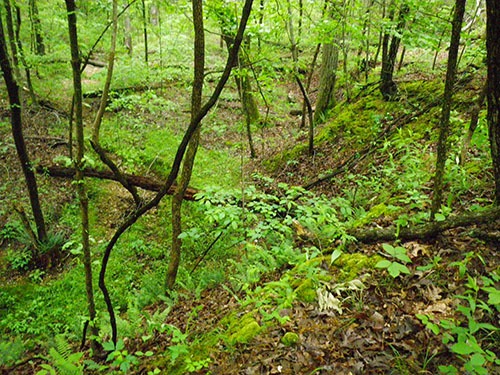
Think About Layers
Often times our humanmade landscapes consist of only one or two vertical layers, for instance an expanse of short, green grass with maybe a couple of tall shade trees. However, this is rarely the case in a healthy, natural ecosystem. In a healthy, natural ecosystem there are all kinds of layers going from the ground…
-
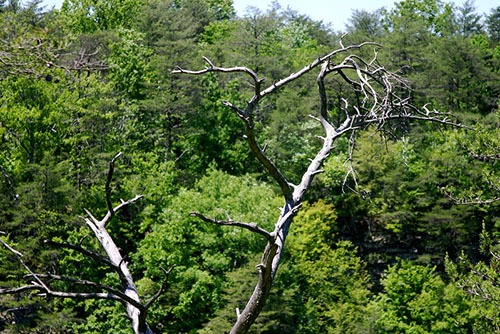
Leave Standing Dead Trees (When Safe)
Standing dead trees, also known as snags, are extremely valuable to wildlife and even some pollinators. Just a few examples of how snags are used by wildlife and pollinators include: Beetle larvae and other wood boring insects create tunnels in the dead tree. Many of these insects then become food for other wildlife such as…
-
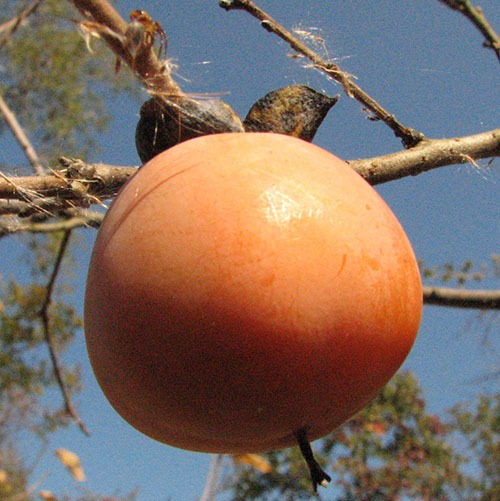
American Persimmon
The American persimmon (Diospyros virginiana) is a medium-sized tree that is native to most of the eastern half of the U.S. It grows in full sun and a wide variety of soils. The dark green leaves are your stereotypical “leaf shape” so aren’t much help by themselves for identifying the tree. The bark, however, is…
-
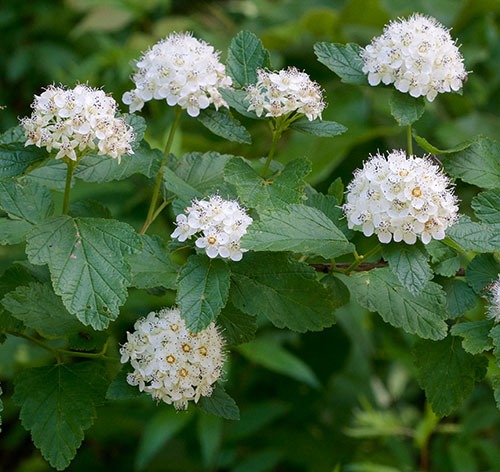
Ninebark
Ninebark (Physocarpus opulifolius) is native to most of the eastern half of the U.S. In the wild, this shrub is often found along streambanks, woods edges, rocky slopes, and moist open areas. Although it is often found naturally in medium to moist locations, once established, ninebark can be very drought tolerant. In recent years, ninebark…
-
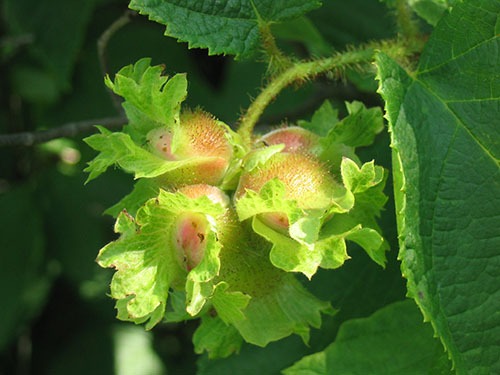
American Hazelnut
The American hazelnut (Corylus americana) is native throughout much of the eastern two thirds of the U.S. It grows in full sun to part shade, but produces more nuts in full sun, and will tolerate a wide variety of soils. This native shrub often forms multi-trunked thickets and can be 5-10 feet tall. American hazelnuts…
-
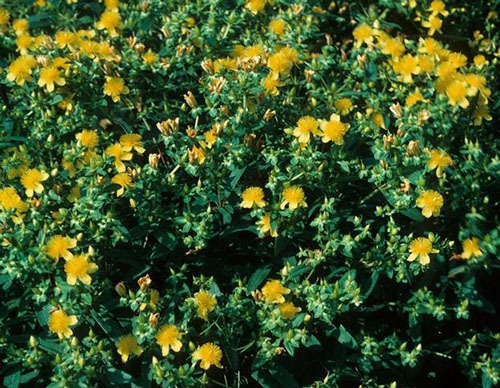
Plant Native Trees and Shrubs in the Late Fall
Although we often think of planting wildflowers and other herbaceous plants for pollinators, trees and shrubs can be extremely beneficial for pollinators. If those trees and shrubs are native, then they tend to support a wider variety of pollinators than their non-native counterparts, and they provide this support to the adult pollinators as well as…
-
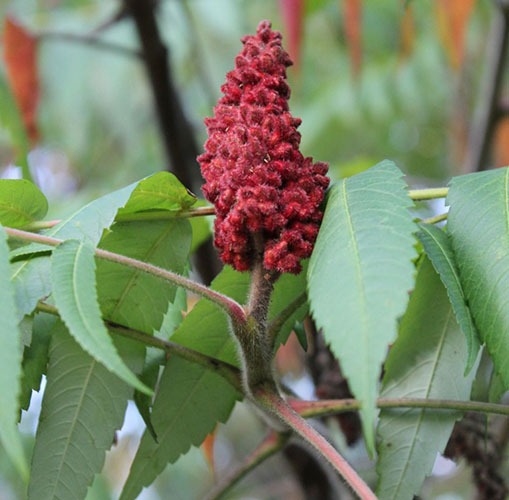
Staghorn Sumac
Note: Staghorn sumac and poison sumac (Toxicodendron vernix) are two different plants. They are both in the cashew family, but poison sumac is more closely related to poison ivy (Toxicodendron radicans) than staghorn sumac. At one time poison ivy and poison sumac were considered part of the Rhus genus, and some older references still contain…
-
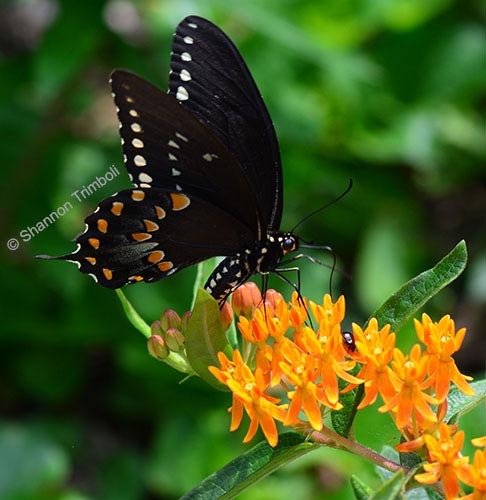
Plant Native Perennial Wildflowers in the Fall
We always think of spring as the planting season, but fall is the perfect time to plant native perennial wildflowers. When we plant in the spring, the flower has to divide its energy between establishing a strong root system and growing the vegetative portion of the plant and perhaps flowering that year. However, when we…
-
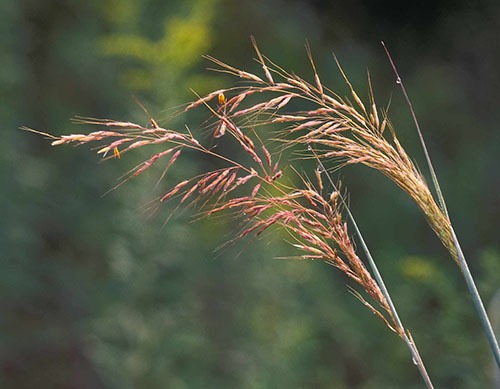
Plant Native Grasses
Wait a minute. Plant grasses? I thought there was a push among those gardening for pollinators and wildlife to reduce yards and grassy areas…. Well, yes, to all of that. The key point here is to plant native grasses like big bluestem, little bluestem, Indian grass, prairie dropseed, and many others. These plants play key…
-
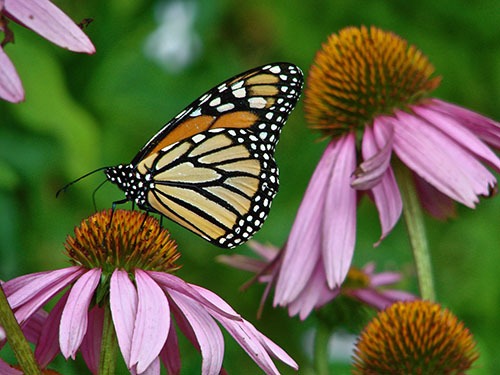
Purple Coneflower
Purple coneflower (Echinacea purpurea) is a perennial wildflower native to most of the eastern 2/3 of the U.S. In the wild it is found in open prairies and meadows. It is also commonly planted in prairie restoration sites or similar settings and has become a popular ornamental flower that can be found throughout the horticulture…
-
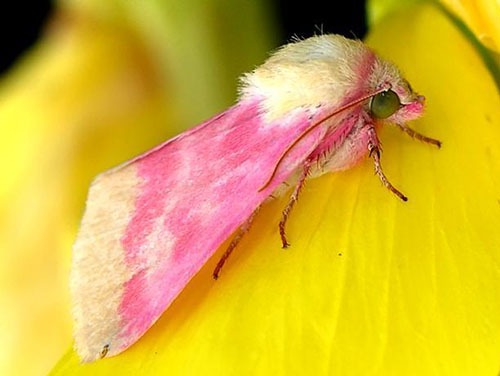
Plant Flowers that Open at Different Times of the Day
When a flower opens, or at least when it produces nectar, is often timed with when its natural pollinators are active. For example, squash flowers open very early in the day and close by the middle of the day. That is because the native pollinator for squash, pumpkins, and gourds is the squash bee which…
-
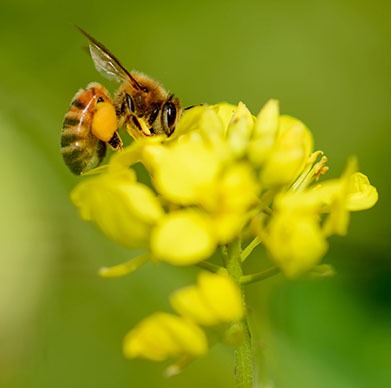
Let Cool Weather Crops and Deer Food Plots Bloom
In the late winter and early spring, many people plant cool weather crops in their gardens. These often include things like broccoli, kale, and cabbage. All of these are in the mustard family. In rural areas, many people also plant deer food plots in the summer and fall. Commercial seed mixes for deer food plots…
-
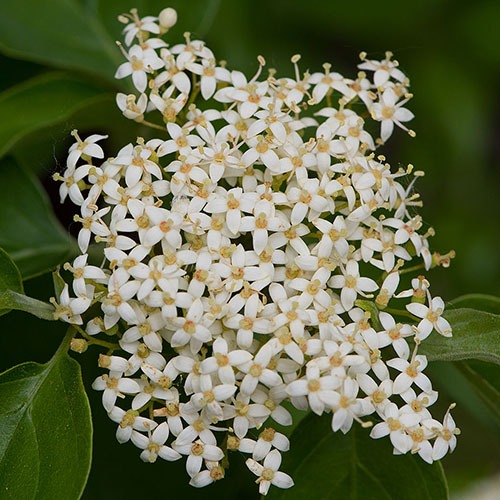
Rough-leafed Dogwood
The rough-leafed dogwood (Cornus drummondii) is one of five species of dogwoods native to Kentucky. It can be found growing in thickets, open woodlands, edges of fields or creeks, and savannahs. Rough-leafed dogwoods can grow 15-20 feet tall and will often send up new shoots to form a multi-trunk shrub or thicket. As one might…
-
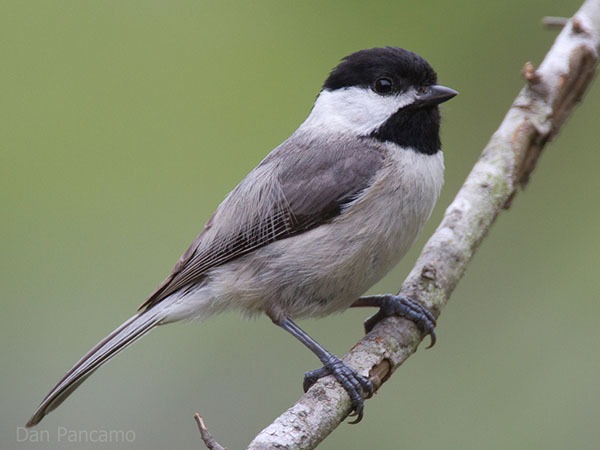
Plant at least 70% of yard in native plants to increase songbird nesting success
Carolina chickadees are not able to successfully raise enough young to maintain their population numbers in areas where less than 70% of the plants are native species, according to new research from the University of Delaware. The study was conducted in backyards throughout Washington, D.C. The research looked at the relationship between Carolina chickadee nesting…
-
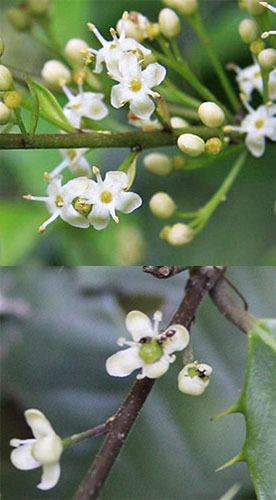
American Holly
The American holly (Ilex opaca) is a native evergreen tree that grows throughout much of the eastern half of the country. In the wild, it can be found growing in rich, well-drained (but not super dry), slightly acidic soils. It prefers mostly sunny areas, but can be found growing as an understory tree in semi-open…
-
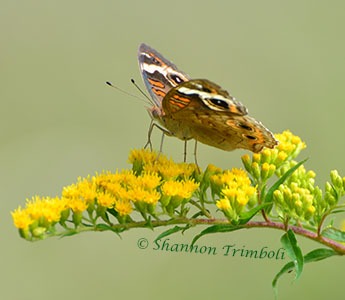
Goldenrods
Goldenrods (Solidago spp.) are in the aster family – the same family as daisies, sunflowers, and asters. The USDA Plants Database lists 33 species of goldenrods that are native to Kentucky. Two of those species, the white-haired goldenrod (Solidago albopilosa) and Short’s goldenrod (Solidago shortii) are federally endangered. The giant goldenrod (Solidago gigantea) is Kentucky’s…
-

Cup plant
Cup plant (Silphium perfoliatum) is a tall wildflower that is native to Kentucky and much of the eastern U.S. It commonly grows 4-6 feet tall and has been known to grow even taller in ideal conditions. Once established, cup plant spreads both by seeds and by underground rhizomes that form clones. In favorable conditions, it…
-
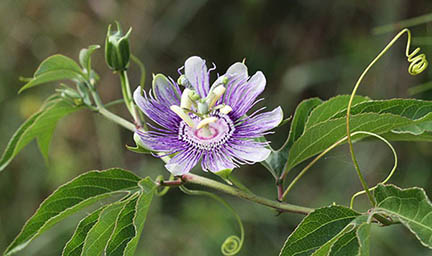
Passionflower
Passionflower (Passiflora incarnate) is a deciduous vine native to most of the eastern U.S. and a few states west of the Mississippi River. It is often found trailing along the ground or climbing up nearby vegetation in sunny areas. The passionflower is the state wildflower of Tennessee. In Kentucky, passionflower blooms from May through August. The…
-
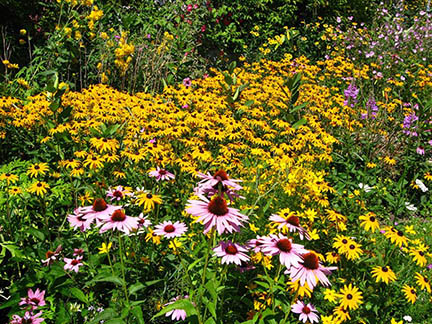
Incorporate Native Plants into Your Landscape
Incorporating native plants into your landscape can be a simple and effective way to attract pollinators and wildlife to your yard. While you can choose to plant only natives, you can also choose to have a mix of native and non-native plants. It doesn’t have to be all or nothing. Below are a few reasons…
-
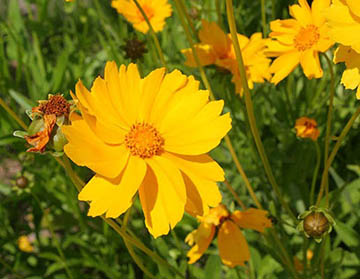
Lance-Leaf Coreopsis
Lance-leaf coreopsis (Coreopsis lanceolata) is native to most of the continental U.S. It is one of eight species of coreopsis native to Kentucky and is the species that is the most common. Other names for lance-leaf coreopsis include tickseed and sand coreopsis. The name tickseed comes from the fact that its dark brown seeds resemble…
-
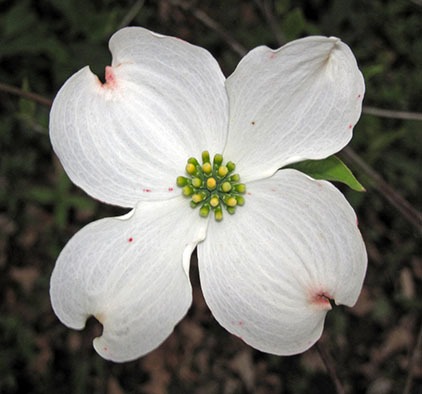
Flowering Dogwood
The flowering dogwood (Cornus florida) is a small tree or tall shrub native to much of the eastern U.S. It is probably the most familiar of our native dogwoods and is the one that most people are referring to when they say “dogwood.” In addition to growing wild in our woods, the flowering dogwood is…
-
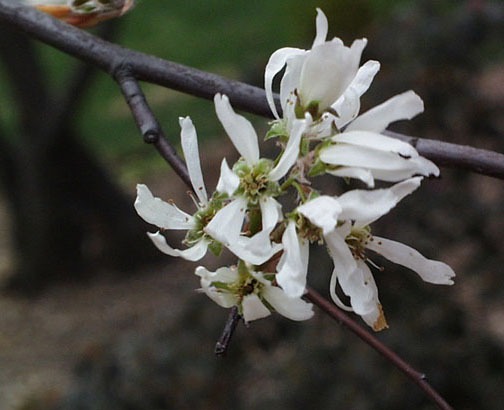
Serviceberry
Serviceberries (Amelanchier spp.) are small trees or large shrubs that typically grow to around 10-15 feet tall, but occasionally can be taller. There are multiple different species of serviceberry throughout the U.S. and Canada. In fact, every state except for Hawaii has a native species of serviceberry. In Kentucky, our two most common native species…
-
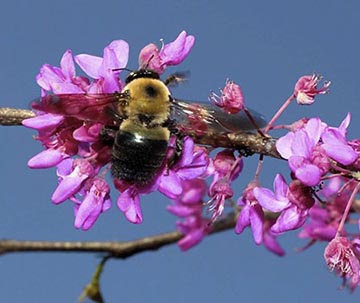
Eastern Redbud
The eastern redbud (Cercis canadensis) is a small tree or tall shrub that is native to much of the eastern U.S. In the early spring, redbuds produce clusters of pink flowers. Redbuds bloom before the leaves have started to appear on most trees and their pretty pink flowers can often be spotted in the understory…
-
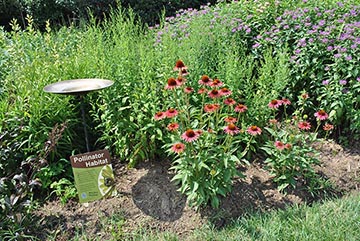
Break Big Projects into Smaller Projects
When planning a large, new pollinator garden or wildlife habitat project, it is easy to get carried away and try to take on too much at once. If you are thinking about starting a big, new project this year, I encourage you to think about how it can be broken into smaller pieces that are…
-
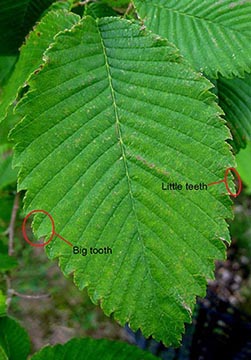
Elms
Elms are deciduous trees and many species can be found in different parts of the world. In Kentucky, we have four species of native elms – the American elm (Ulmus americana), slippery elm (U. rubra), winged elm (U. alata), and rock elm (U. thomasii). Other elms have been introduced as ornamentals and the Siberian elm…
-
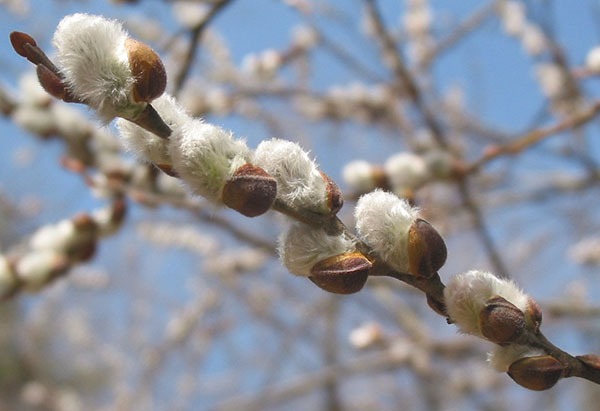
Pussy Willow
Different species of willow can be found throughout much of the Northern Hemisphere. There are several species native to Kentucky and several exotic species can be found growing as ornamentals. The pussy willow (Salix discolor) is perhaps our most familiar native willow, even though it is not Kentucky’s most common native willow. In addition to…
-
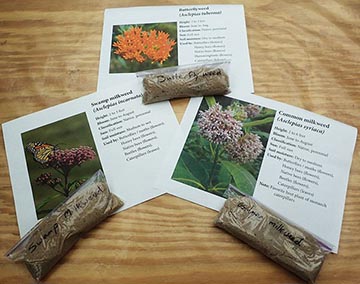
Planting Native Seeds
in Take ActionWhen it comes to planting native seeds for pollinators, just scattering some seeds in a flower bed may not be enough. Some wildflowers will sprout like that, but the seeds of many species need to be treated before they will germinate. Those treatments may include going through the digestive tract of an animal to remove…
-
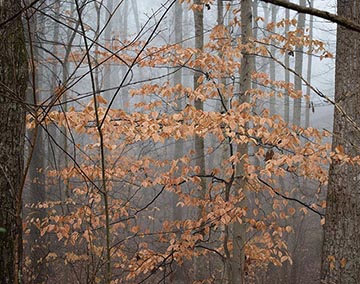
American Beech
The American beech (Fagus grandifolia) is a tall, deciduous tree that is native to the eastern U.S. It is the only beech tree native to North America. Other beech species are native to Europe and are sometimes planted as ornamentals. However, when most people in the eastern U.S. talk about beeches they are referring to…
-
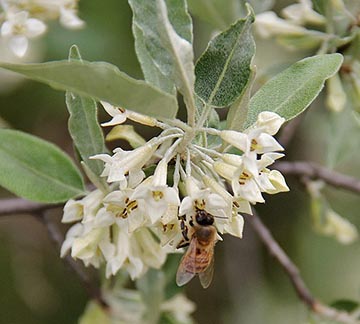
Avoid Planting Invasive Species
Invasive species are species that are not native to an area, but once introduced to an area can spread rapidly and crowd out other species. Not all non-native species are invasive, but some are and those species can cause significant ecological damage. Invasive species also have an economic impact as local, state, and federal agencies…
-
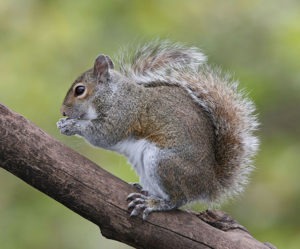
Gray Squirrels
Of the three species of squirrels that can be found in Kentucky, the gray squirrel (Sciurus carolinensis) is the most common. Gray squirrels are native to most of the eastern U.S. They have also been introduced to parts of the western U.S. and several European countries. In locations where gray squirrels have been introduced, they…
-

Do a Soil Test
A soil test is an inexpensive and valuable investment when planting for pollinators and wildlife. Basic soil tests will tell you the pH of your soil and the availability of potassium, phosphorus, calcium, magnesium, and zinc. This is important information to know because it can help you determine what, if any, amendments you need to…
-
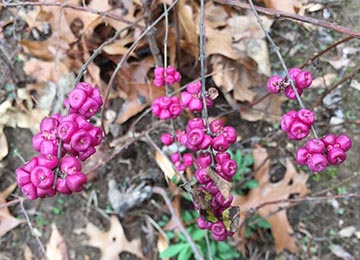
Coralberry
Coralberry (Symphoricarpos orbiculatus) is a deciduous shrub that is native to most of the eastern half of the U.S. It typically grows 2-4 feet tall and is most commonly found in semi-open woods. Coralberry blooms during the summer, but the flowers are not very showy and are often overlooked. It produces pinkish to purplish berries…
-
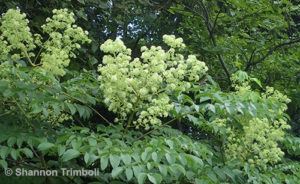
Devil’s Walking Stick
Devil’s walking stick (Aralia spinosa) is a small tree or tall shrub that is native to the eastern U.S. It is often found growing along the edges of forests or in open woodlands. Devil’s walking stick can be a very important plant for honey bees, native bees, and butterflies. From approximately mid-July to mid-August, devil’s…
-
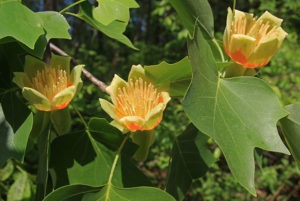
Tulip poplars – A source of abundant nectar and pollen for Kentucky pollinators
The tulip poplar (Liriodendron tulipifera), a.k.a. yellow poplar, tulip tree, or tulip magnolia, is a common and important part of our forests. Despite the name, tulip poplars aren’t poplars. Instead, the tulip poplar is in the magnolia family and is part of a genus that only has two species – the other species is found…
-
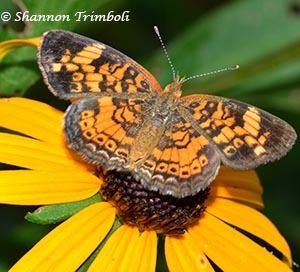
Black-eyed Susan: A favorite nectar source for butterflies
The black-eyed susan (Rudbeckia hirta) is a native wildflower that belongs to a group of flowers called the coneflowers. The coneflowers include popular wildflowers like the black-eyed susans, brown-eyed susans, purple coneflower, grey-headed coneflower, and many others. Coneflowers are semi-drought tolerant and bloom during the summer. In Kentucky, Black-eyed susans bloom from June to September. What…
